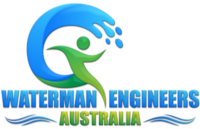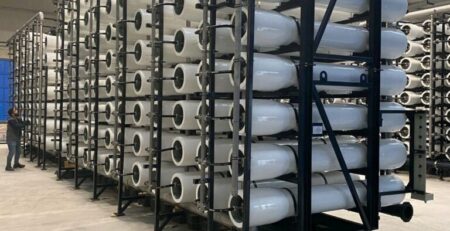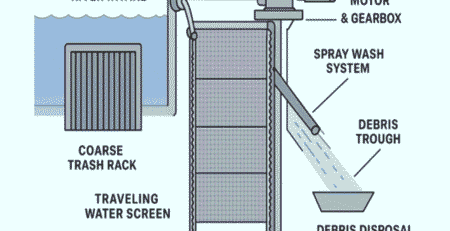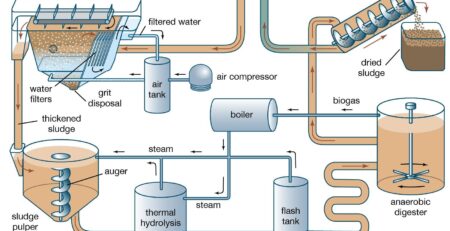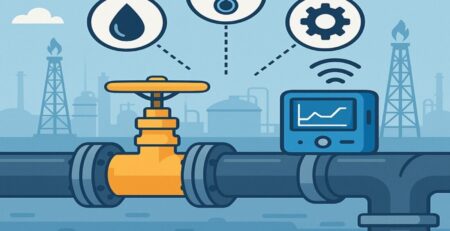Comprehensive Engineering Design Parameters for Fog Cannon Systems for Wastewater Evaporation in Mining Industry
Comprehensive Engineering Design Parameters for Fog Cannon Systems for Wastewater Evaporation in Mining Industry
1. Hydraulic Design Parameters
| Parameter | Engineering Detail |
| Design Flow Rate (Q) | Defined based on the volumetric evaporation requirement (typically 5–40 m³/h per unit). Flowrate directly influences the droplet residence time and evaporation capacity. |
| Operating Pressure (P) | Nozzle atomization requires discharge pressures between 20–60 bar depending on droplet size target. Higher pressures yield finer droplets, increasing specific surface area for rapid evaporation but increase pump energy consumption. |
| Nozzle Hydraulic Loading | Each nozzle is designed for uniform distribution of flow to avoid non-uniform spray patterns. Nozzle count, arrangement, and orifice diameter are determined based on total system flow capacity and spray angle coverage. |
| Water Quality Tolerance | To prevent nozzle erosion or clogging, pre-filtration ensures a maximum particulate size ≤ 100 µm. Chemical compatibility with brine, scaling ions (e.g., Ca²⁺, Mg²⁺), and minor hydrocarbons is considered. |
2. Droplet Dynamics & Spray Design
| Parameter | Engineering Detail |
| Droplet Size Distribution (DSD) | Atomized droplets target a 30–100 micron Sauter Mean Diameter (SMD) to optimize evaporation rate by maximizing the surface-to-volume ratio while minimizing fall-out risk. CFD simulations (Computational Fluid Dynamics) are employed to optimize droplet trajectory and dispersion under variable wind conditions. |
| Spray Cone Angle | Adjustable or fixed between 30°–60°, depending on site evaporation pond size or designated evaporation area to ensure coverage without overspray beyond containment boundaries. |
| Throw Distance | Required to project atomized droplets across an operational range of 30 to 100 meters, determined by fan capacity and nozzle arrangement. Computational analysis is conducted to prevent salt fallout outside permitted zones. |
3. Mechanical & Structural Design
| Parameter | Engineering Detail |
| Material Selection | All wetted components (pump casing, nozzles, piping) constructed from 316L stainless steel, duplex stainless steel, or ceramic to resist chloride-induced corrosion, scaling, and abrasion from high TDS brine. Structural frames galvanized or coated with epoxy/polyurethane paints for UV, chemical, and dust resistance. |
| Pump Design | High-pressure plunger or multistage centrifugal pump designed for continuous duty, high salinity tolerance, and resistance to cavitation under low NPSH conditions. |
| Fan Assembly | Industrial axial fan with anti-corrosive coating and stainless shafting. Designed for static pressures of 300–800 Pa and airflow of 20,000–60,000 m³/h. Balancing ensures vibration limits per ISO 10816. |
| Mounting Options | Skid-mounted (static), trailer-mounted (mobile), or tower-mounted as per site topography. Designed for seismic stability and wind load in open-pit mining conditions. |
| Maintenance Features | Modular components for ease of nozzle replacement, fan motor servicing, and pump maintenance. Filters fitted with DP switches or auto-backwash option. |
4. Electrical & Instrumentation Design (E&I)
| Parameter | Engineering Detail |
| Electrical Load | Designed for 3-phase 380–440V supply, total connected load typically 10–50 kW/unit (fan, pump, auxiliary systems). Motors IP65-rated for outdoor mining environment, with C3 or C5 corrosion protection class. |
| Motor Drives | VFD (Variable Frequency Drive) applied to both pump and fan motors to control droplet size (via pump pressure) and throw distance (via fan speed). |
| Control System | PLC-based control with remote SCADA interface. Features include:
– Local/Remote mode – Real-time monitoring of pressure, flow, tank level – Automatic wind-speed-based shutdown to prevent offsite droplet drift |
| Sensors | – Wind Speed & Direction Sensors (shutdown if exceeding threshold)
– Differential Pressure Switch (filter fouling alarm) – Level Transmitter for feed tank – Pressure Transmitter for pump discharge line |
5. Thermal and Environmental Design Considerations
| Parameter | Engineering Detail |
| Evaporation Potential | Based on psychrometric conditions; maximum evaporation occurs at ambient temperatures >25°C, RH <60%, and wind speed 1–5 m/s. Design optimized for these windows to reduce unevaporated brine volume. |
| Wind Drift Control | Designed to automatically stop spraying when wind exceeds safe operational limit (>7 m/s) to prevent mist carryover to sensitive mining equipment or neighboring zones. |
| Salt Fallout Zone Design | Spray zone designed with containment features (e.g., lined collection area or graded surface with return drain) to capture unevaporated brine and prevent environmental contamination. |
| Noise Emission Control | Noise reduction design (silencers, fan blade optimization) ensures compliance with <85 dB(A) at 10 meters for operator health and surrounding ecosystem impact. |
6. Safety and Regulatory Design Compliance
| Parameter | Engineering Detail |
| Structural Stability | Designed per applicable wind and seismic loading codes (e.g., ASCE 7, Eurocode 8) for open-pit environments. |
| Electrical Protection | Motors and panels IP65/NEMA 4X rated; earthing, overload, short-circuit, and thermal protections as per IEC 60204 / IEEE Std 1584. |
| Emergency Features | Emergency stop switches located at operator stations; dry-run protection for pumps; frost-protection auto drain valves for cold climates. |
7. Performance Design Targets
| Parameter | Target Value |
| Evaporation Rate | 10–40 m³/day per cannon (site dependent) |
| Operational Availability | >95% (planned uptime) |
| Design Life | 10+ years (with scheduled maintenance) |
| Power Consumption | 0.8–1.5 kWh/m³ evaporated (typical range) |
